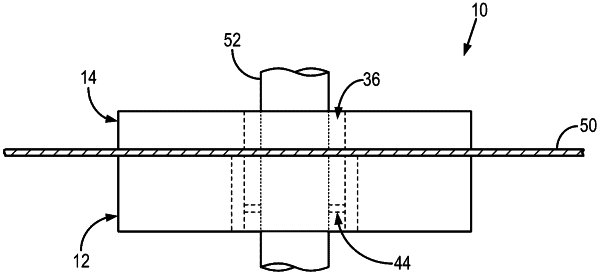| CPC A61B 1/233 (2013.01) [A41D 13/11 (2013.01); A61B 1/00147 (2013.01); A61B 90/05 (2016.02); A61M 39/04 (2013.01)] | 21 Claims |

|
1. A medical instrument port, comprising:
a first component having an outer edge and extending from an outward facing surface to an inward facing surface and having formed therein an aperture that extends from the outward facing surface to the inward facing surface;
a second component comprising:
a flange having an outer edge and extending from an outward facing surface to an inward facing surface; and
a tube coupled to the flange and extending from the inward facing surface of the flange to a leading edge of the tube;
wherein a central lumen is formed in the second component, which extends from the outward facing surface of the flange to the leading edge of the tube;
wherein the aperture formed in the first component is sized to receive the tube of the second component such that when in a coupled state the first component and the second component define a port through which a medical instrument can pass;
wherein the flange is sized such that a distance between an outer surface of the tube and an outer edge of the flange defines a surface area on the inward facing surface of the flange sufficient to retain a face mask between the inward facing surface of the first component and the inward facing surface of the flange when in the coupled state;
wherein the first component is coupled to the second component in the coupled state via an interference fit between the tube and the aperture;
wherein when in the coupled state an interface where the outer edge of the first component meets the outer edge of the flange is exposed to permit retention of the face mask between the inward facing surface of the first component and the inward facing surface of the flange.
|